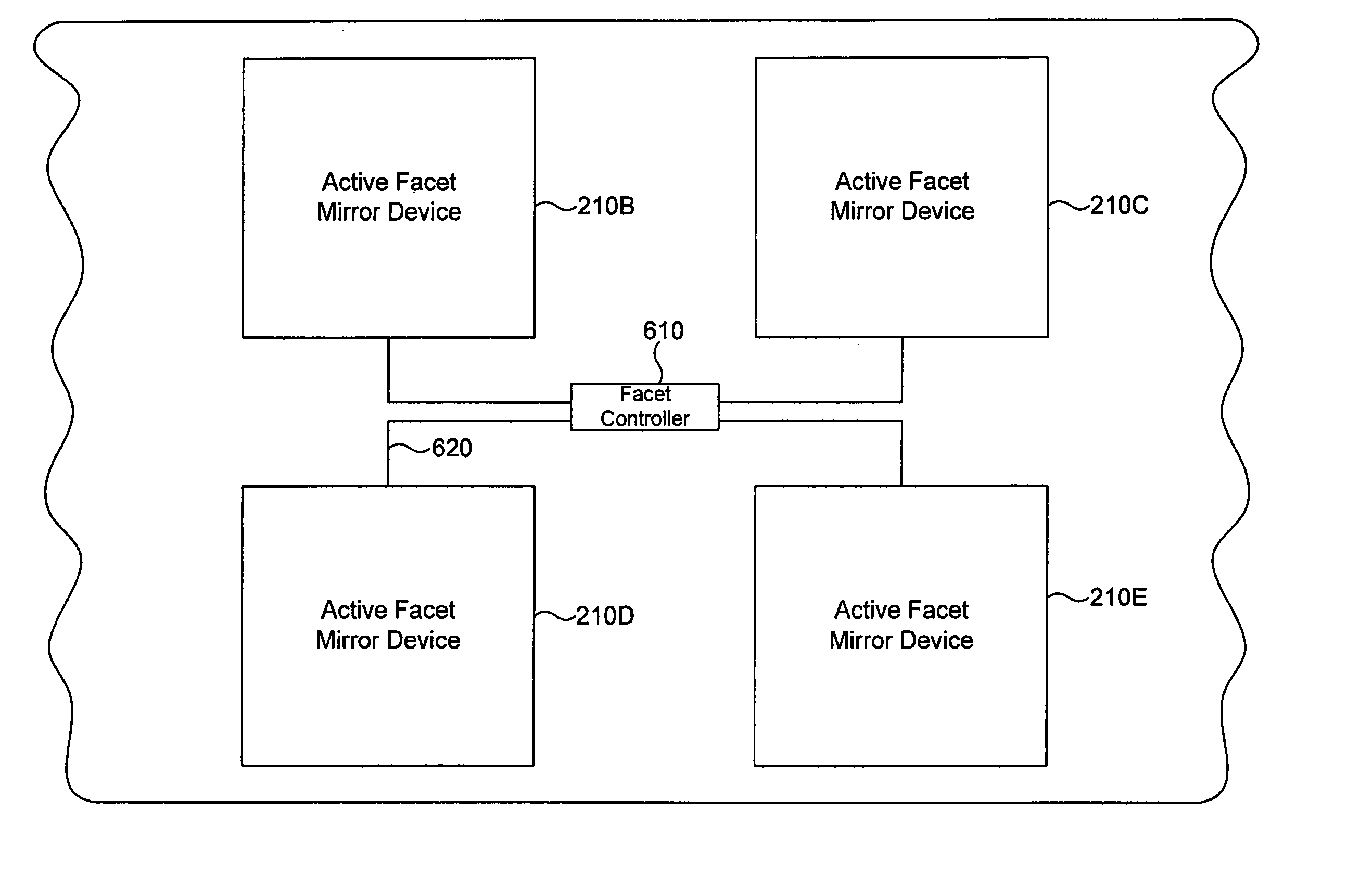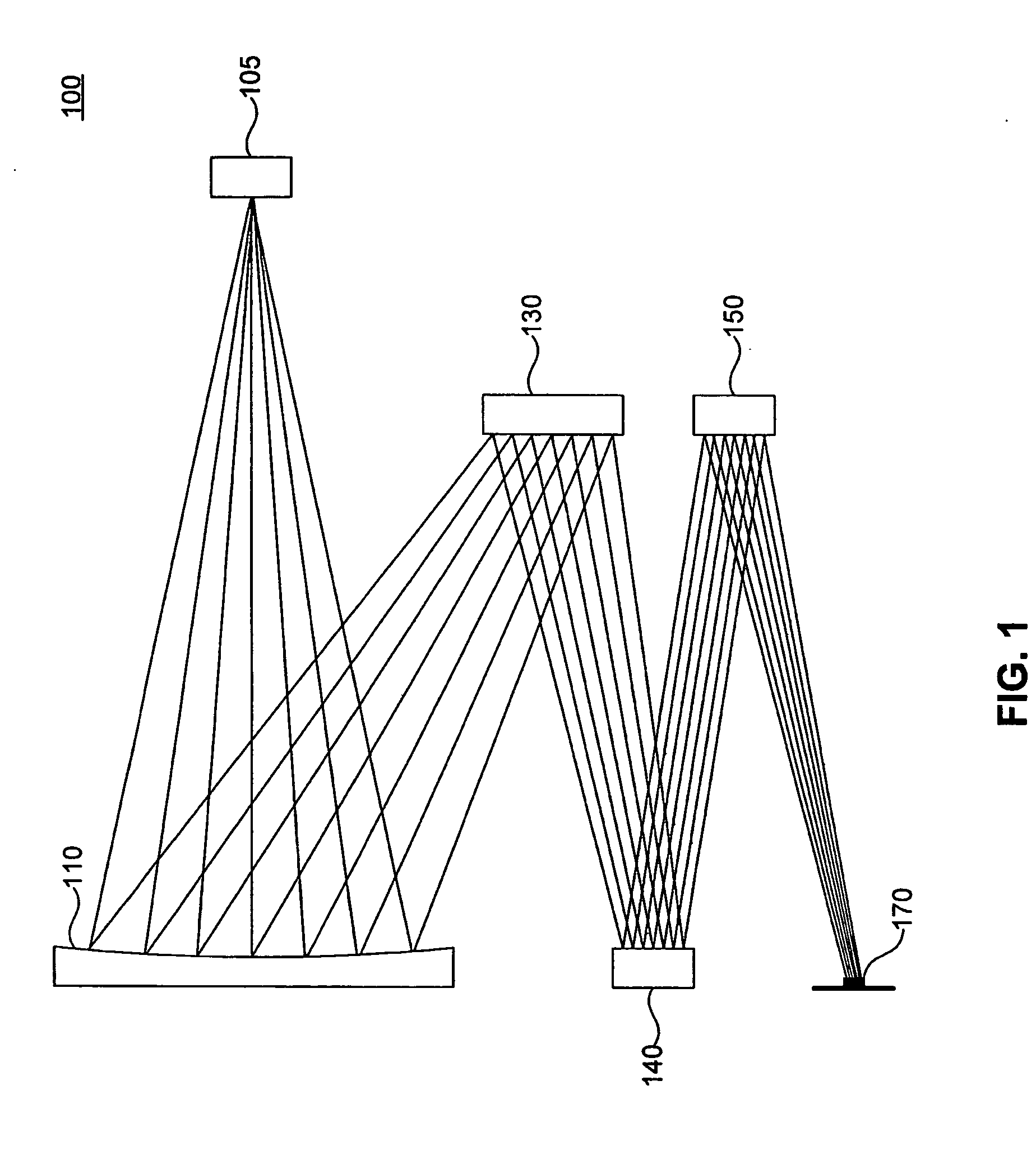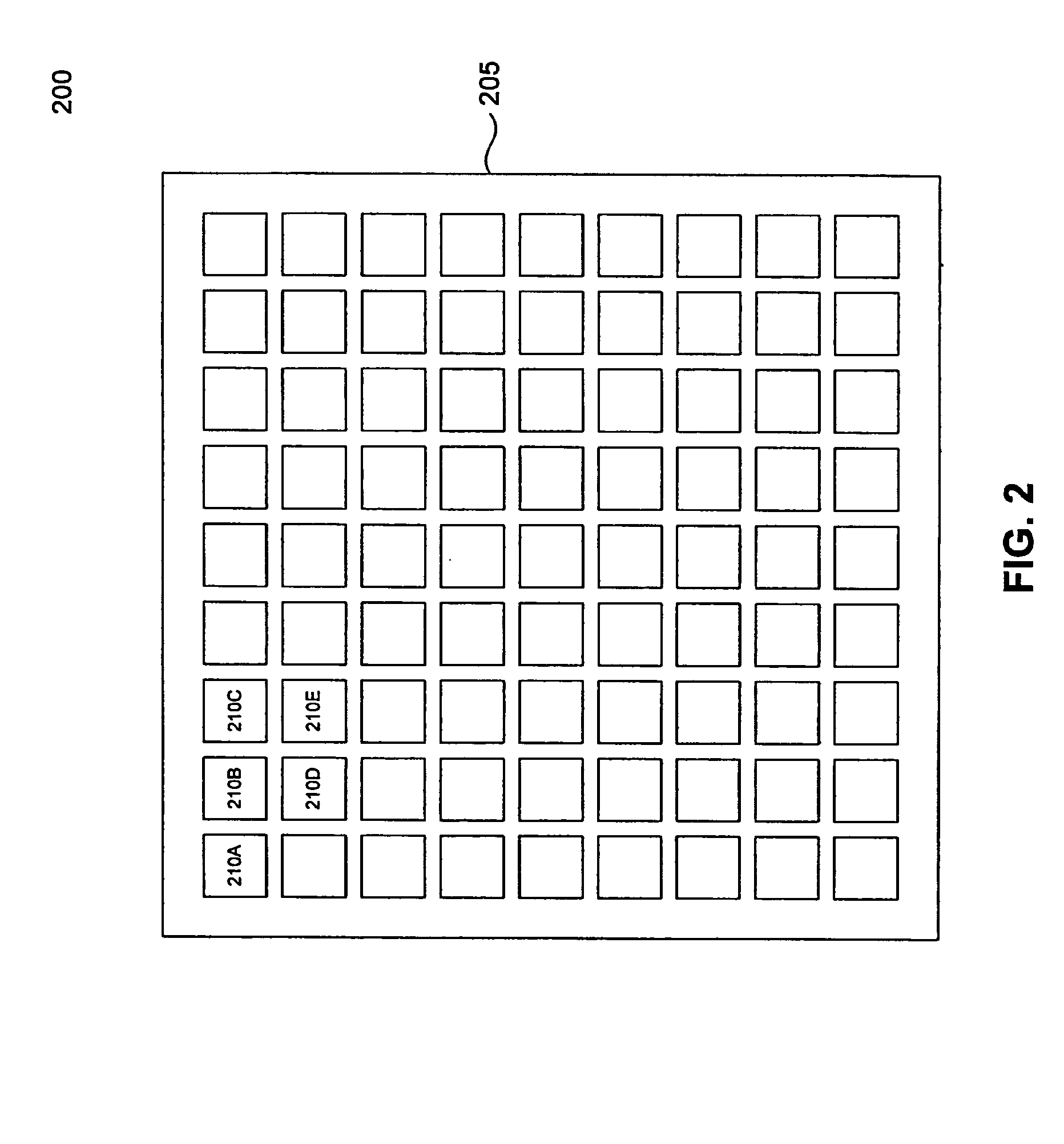Active faceted mirror system for lithography
a technology of lithography and faceted mirrors, applied in the field of lithography, can solve the problems of limited illumination system, limited illumination system, poor illumination effect, etc., and achieve the effects of cost saving, easy production of fields, and greater design flexibility and ease of us
- Summary
- Abstract
- Description
- Claims
- Application Information
AI Technical Summary
Benefits of technology
Problems solved by technology
Method used
Image
Examples
Embodiment Construction
[0027] While the present invention is described herein with reference to illustrative embodiments for particular applications, it should be understood that the invention is not limited thereto. Those skilled in the art with access to the teachings provided herein will recognize additional modifications, applications, and embodiments within the scope thereof and additional fields in which the invention would be of significant utility.
[0028]FIG. 1 illustrates illumination system 100 that uses fly's eye mirrors. Illumination system 100 includes illumination source 105, field facet mirror 110, pupil facet mirror 130, an optional first reflective element 140, and second reflective element 150.
[0029] Illumination source 105 can be a EUV source, such as a laser plasma source, a capillary discharge tube, or a synchrotron. Other types of light sources, including non-EUV sources can be used, as will be known by individuals skilled in the relevant arts. The electromagnetic radiation from ill...
PUM
 Login to View More
Login to View More Abstract
Description
Claims
Application Information
 Login to View More
Login to View More - R&D
- Intellectual Property
- Life Sciences
- Materials
- Tech Scout
- Unparalleled Data Quality
- Higher Quality Content
- 60% Fewer Hallucinations
Browse by: Latest US Patents, China's latest patents, Technical Efficacy Thesaurus, Application Domain, Technology Topic, Popular Technical Reports.
© 2025 PatSnap. All rights reserved.Legal|Privacy policy|Modern Slavery Act Transparency Statement|Sitemap|About US| Contact US: help@patsnap.com



